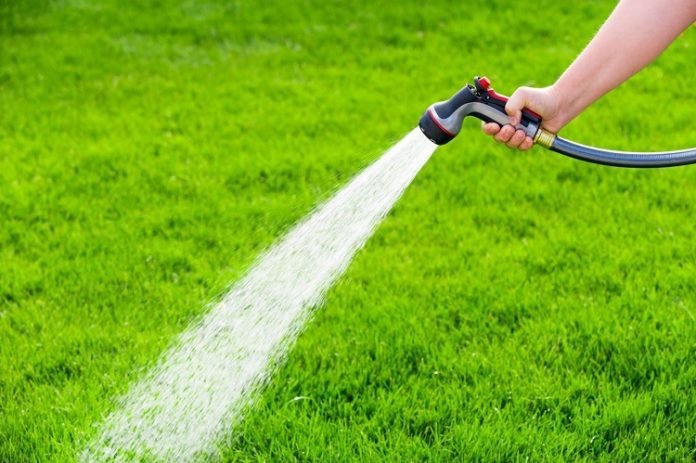Last Updated on September 9, 2023 by
When the expected results are not obtained, the quest for a lush green lawn may rapidly become irritating. If you feel like you’re putting work into your lawn, but not getting the results you want, whether you do it yourself or hire a lawn care service, chances are you’re frustrated. lawn care tips are to follows
The reality is that creating lush, green grass requires a mix of the conventional best lawn care techniques and some lesser-known methods. It’s a little trickier than most people think. Even many lawn care experts fall into the habit of doing things the same way over and over again.
Thankfully, you’ve come to the right place to up your lawn care game and strategies. Keep on reading for our full breakdown of the best lawn care tips you need to transform your lawn into a spot of heaven.
Table of Contents
The Best Lawn Care: Familiarity With Your Soil
What occurs above ground mirrors what happens below ground when it comes to grass.
Take the guidance of lawn professionals and evaluate your soil to determine your starting point for basics like soil pH. Test kits and recognized soil labs are often found through your local county extension office or agricultural agency.
You may collect precise soil samples on your own. Separate samples should be taken for problem areas, such as bare patches or areas with undesirable lawn moss.
Let the lab know you’re evaluating grass sections, so they may provide suggestions to help you get your lawn back on track.
Start by Fixing Any Underlying Problems
Turn suggestions into projects after you get the test findings. Don’t wait to fix the issue; don’t risk it happening again.
To maximize the potential of your grass, use soil amendments as directed by the lab. Lime, for example, helps grasses take on available nutrients by restoring pH equilibrium in the soil.
Repair bare grass patches first, then difficult areas.
By premixing high-quality grass seed with professional-grade fertilizer and protective wood mulch in a single container, all-in-one solutions simplify patching and restorations.
If you have pets in your household, you’re certain to have some pet damage. But don’t panic; happy dogs and healthy lawns can coexist.
Pick the Right Type of Grass for Your Climate
Grasses that are adapted to their growth environment produce excellent lawns. Turfgrasses, like garden flowers and shrubs, have different climatic preferences and sensitivities for dryness, shadow, and other environmental factors.
One advantage of seed over sod is the greater variety of grass types available, each with unique characteristics ranging from resilience to texture under bare feet.
Cool-season grasses, also including Kentucky bluegrass, have their peak growth in the autumn and spring. They thrive in colder climates. Warm-season grasses are grasses that grow in the warmer months of the year.
Bermudagrass, for example, thrives in the summer heat and warmer climes. Lawn grasses that are suitable for the region need less water and other resources, as well as less maintenance time.
You might need the help of professionals for this step. Just contact Lush Green Landscapes Lawn Care for their insights and you’ll be good to go.
Measure Your Sunlight
Direct sunshine is an additional fundamental need for healthy grass. To thrive, all types of grass need a certain quantity of direct sunshine each day.
Sun-loving grasses, like Perennial Ryegrass, require seven to eight hours of direct sunlight to thrive.
Shade types (often fine fescues) need at least three to five hours of sunlight to thrive.
If tree trimming does not thin down trees sufficiently to give adequate sunshine, additional options such as mulch or planting beds may be required.
Excessive clippings and leaves should also be cleaned up, since they prevent light from reaching the grass below.
Work on Weed Prevention
To get rid of weeds, use a pre-emergent product that prevents their seeds from sprouting.
Pre-emergent herbicides are only effective before the weeds have emerged, so some preparation is required. Making a lawn care plan before the spring season comes may be very beneficial.
Don’t want to buy a mass-produced herbicide and prefer to use a natural herbicide instead? Corn gluten is a good option.
Clean Up Any Debris on Your Yard
Any leaves, pine cones, or twigs fall under this category. They should be removed from the lawn because they may obstruct sunlight, which is harmful to the developing grass.
It’s simpler to mow and maintain a healthy lawn if it’s clean. It’s much simpler to appreciate healthy grass. Of course, a pile of leaves is always entertaining for children.
Use Insect Repellent
Chinch bugs, sod webworms, and grubs are all common pests in many regions, and they can all do a lot of harm. Insect detection should be a regular component of lawn care, but it’s not always simple for the ordinary homeowner to perform on their own.
It is critical to have a professional on your site to keep an eye out for early indications of a problem.
A good lawn care firm will also insist on grub treatment, since they understand how quickly grubs can wreak harm. It’s just not worth taking the chance.
Seed Correctly From the First Time
Timing is crucial, whether planting new areas, overseeding your lawn, or thickening existing grass.
Seeding should be timed to coincide with the seasonal development of grass and the optimum time to sow grass. Avoid the typical grass seeding errors that many homeowners make by correctly planting seed.
Take the time to learn how to read a seed tag and who is behind the seed you purchase. Many businesses offer seed that has been bought on the open market, and the contents may astound you.
Premium grass seed allows you to purchase the finest grass seed with confidence and enjoy a long-lasting lawn with improved drought, disease, and insect pest resistance.
Make Use of Bio-Stimulants
Bio-stimulants are used in conjunction with fertilizer to aid in grass growth and general health. Bio-stimulants are not used by all lawn care businesses, although they may be very helpful in terms of stimulating the turf’s natural development.
Bio-stimulants enhance the soil underneath lawns, increasing root mass and providing a better habitat for soil microorganisms to thrive. This tiny life will make your grass more resistant to environmental stressors, assist in nutrient absorption, and even reduce the amount of water your lawn needs.
Mowing Techniques and Best Practices
Always mow your lawn according to best practices, and mow depending on grass growth rather than the day of the week. Mowing heights vary depending on the grass type and season.
Bermudagrass, for example, is best maintained short, while other grasses need greater height. Hot weather necessitates greater mowing heights all around.
Mowing heights should be progressively increased over many sessions. Remove no more than one-third of the length of the blade at a time, or you risk limiting healthy above- and below-ground development.
Use the appropriate grass equipment for the job, depending on the size of your lawn and your objectives, to make chores simpler and less time-consuming.
Furthermore, cutting your lawn too short may actually harm it. When you cut your grass too short, it develops a yellow-brown hue.
This is due to the grass’s utilization of energy stored in its roots, rather than the energy obtained from photosynthesis in the leaf. The usual guideline is to only trim about a third of your lawn at a time.
Appropriate Water Management
Lawn grasses thrive when they are watered thoroughly and infrequently. Shallow, frequent irrigation promotes shallow roots that are vulnerable to drought and other stresses.
You can decrease consumption, save money, and produce healthier, more robust grass by using proper watering techniques and water-conserving grass types. Year after year, Water Star® grasses use up to 30% less water than conventional grass seed.
Watering and other lawn chores may naturally change month to month as you follow your yearly lawn care schedule, but you should constantly take into account what’s going on in your grass.
Pennington’s water rate calculator utilizes real-time weather and data for your particular area to help you figure out how much water you’ll need in regular seasons and droughts.
Water Your Grass in the Morning
This is the ideal time to water your lawn, since the sun will aid in the drying process. Because there is extended wetness, watering at night may potentially cause illnesses in the grass.
Water is necessary for the roots. However, your grass should not have standing water for extended periods of time. You can keep track of when to water your grass by creating a lawn care plan.
The Lawn Care Guide: Simplified
If you’re a new homeowner, figuring out DIY lawn care can be rather overwhelming, to say the least.
Hopefully, our guide has shed some light on the best lawn care advice you could possibly need. But, if you’re still in doubt, you’ll want to reach out to lawn care professionals for tailored advice.
But, for now, you’ll want to check out our additional tips and tricks. All of those (and much more) will be available to you in our home improvement and lifestyle sections.
Read more: Artificial Grass – The Best Way to Preserve the Environment























